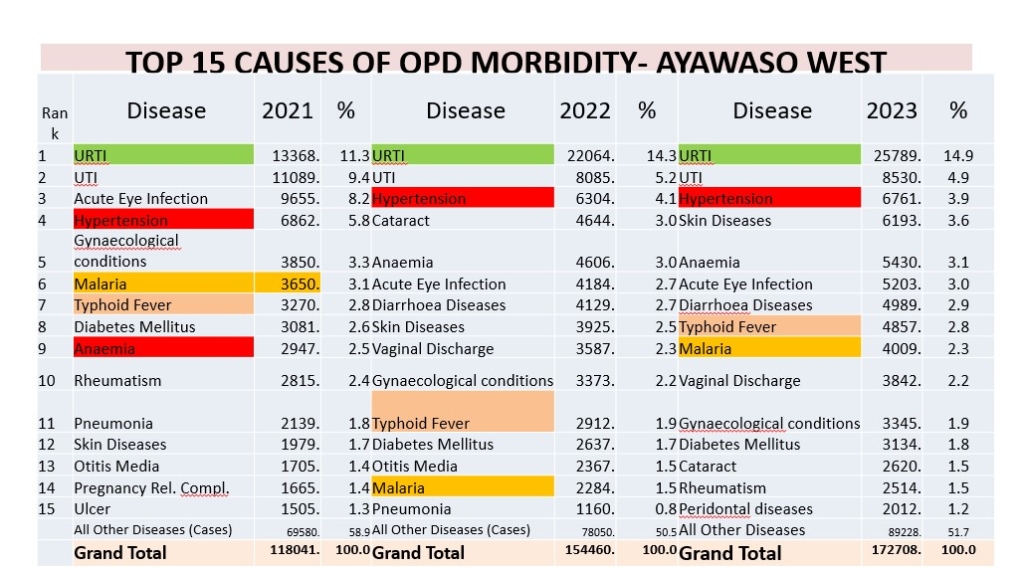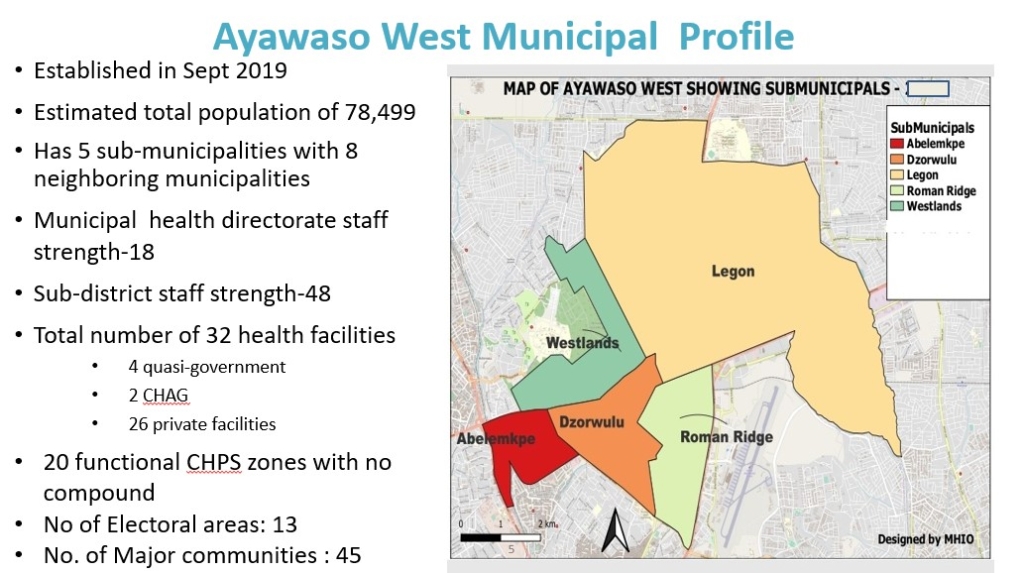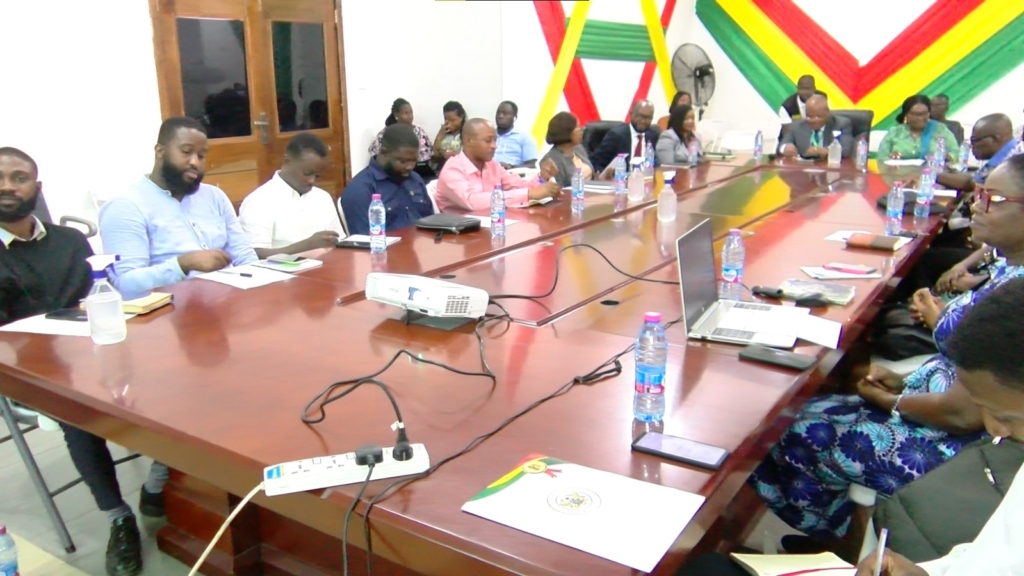In the Ayawaso West Municipality, a concerning health trend has taken center stage. Upper Respiratory Tract Infections (URTI) continue to surge, claiming the top spot among the 15 leading causes of morbidity for the third consecutive year.
In 2023 alone, the municipality recorded a staggering 25,700 cases of URTI, almost doubling the figures from 2021, when 13,300 cases were reported.
At an annual review meeting, it emerged that there were more than 172,000 illnesses reported at the various health facilities in the municipality. Principal Health Officer, Rosemond Asase gave the breakdown.
“It’s seen here once again that upper respiratory tract infection is topping. That has been the case since the municipality was created.”

Exposure to air pollutants such as fine particulate matter (PM2.5), nitrogen dioxide (NO2), and ozone has been linked to respiratory issues, including URTIs. These pollutants can irritate the respiratory tract, making individuals more susceptible to infections.
Additionally, air pollution may weaken the immune system’s ability to fight off infections, making individuals more vulnerable to respiratory illnesses.
In her address, Dr Louisa Ademki Matey, the Municipal Health Director, underscored the significance of deteriorating climate conditions and their potential impact on the prevalence of respiratory infections.
“Other important issues emerging include climate change and issues relating to air pollution. The effects of these we know can be devastating to health.”
“We know also the relationship between air pollution and non-communicable diseases such as chronic respiratory diseases like asthma and chronic obstructive pulmonary diseases and even cancers.”
In recent weeks, Accra attained the unenviable top spot as the city with the most polluted air. The EPA and the Ghana Health Service both issued separate statements on the impact of the pollution on health.
Nonetheless, Dr Matey, while addressing the issue, refrained from immediately establishing a direct correlation between air pollution and the rising instances of Upper Respiratory Tract Infections (URTIs). She spoke on the sidelines of the event.

“As a district, we would this year look into these conditions that we have classified as upper respiratory tract infections, liaise with the facilities and look at how we can segregate the data, take more history from people who come reporting with upper respiratory tract conditions and see how many of them we can relate to other things other than infections.”
Dr Matey revealed that the Municipality is dealing with a high mortality rate and a high rate of caesarian section.
“While we celebrate our successes, let’s also take some time to look at our failures. It’s the only sure way to learn and improve. Some of the areas of concern are: Low Percentage of babies breastfeeding within 1 hour after delivery (67% instead of expected 95%), High Caesarean section rate of 54% instead of expected 15%, High maternal mortality ratio of 179/100,000 instead of 125/100,000. High institutional all-cause mortality rate at 48% instead of 18% or less, High antibiotics prescription in some facilities to levels as high as 52% instead of 20%.

“Low Antiretroviral Coverage rate of 69.1% instead of 95%. Low detection and reporting of surgical site infections. Low reporting of depression and attempted suicide cases at 88/1000 and 0/1000 instead of 175/1000 and 25 per 1000 respectively. Low detection and reporting of public health priority disease such as measles, yellow fever and Acute Flaccid Paralysis.”
In 2023, the municipality reported only 1 case of AFP instead of the expected 3 and reported 3 cases of measles. There was no reported case of suspected yellow fellow. This suggests a weak disease surveillance system and we need to promptly change this. I would encourage all facilities here to make it their annual target to detect and report at least 1 suspected case each of AFP, measles and Yellow Fever. I know it is possible.
The area, surrounded by busy roads like the Tetteh Quarshie roundabout, deals with continuous air pollution from vehicle fumes. Clean Air Fund’s sensors highlight the issue.
Desmond Appiah, Clean Air Fund’s Country Director, stressed the need for investigations and specific policies in the Municipality to address the growing health concerns.
“Part of the projects that we are running is also putting local censors to augment what EPA has and it gives a good sense of where we need to realize that pollution may be high and then identify the things that are happening around those areas that may be leading to that pollution just so you can be able to target your actions. This is where they say the rubber hits the road. In the districts, it’s where the real action takes place.”
With a total of 32 health facilities, majority being privately owned, the Ayawaso West Municipality is set to welcome a new government-managed health facility. Municipal Chief Executive, Sandra Ahenkorah, confirms the upcoming addition to enhance healthcare services in the area.
“I am therefore happy to inform this forum that our municipality is benefiting from the government’s Agenda 111 program. This will involve the construction, of a 100-bed district hospital at Roman Ridge. Having finally overcome the major obstacle of land, the consultants have been instructed to commence work.”
